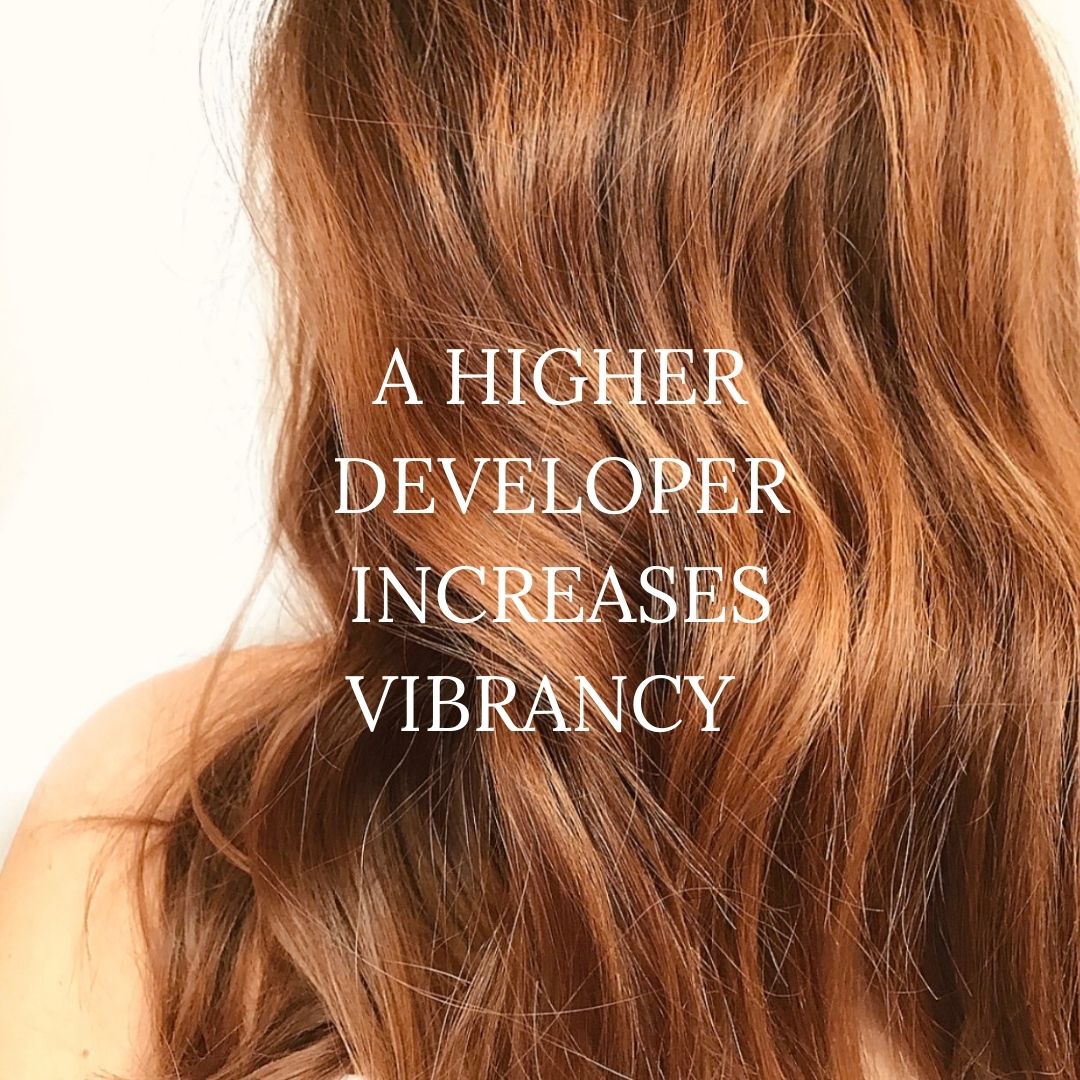
WHAT IS DEVELOPER?
We use it every day mixed with our color and lightener , but what does developer actually do?
Essentially, developer is the power to get you where you’re going. It is not what creates “lift” necessarily. It is also not what decides how many levels you actually lift through.
The truth is, developer is not really what we originally thought it was in school. 20 Volume is not best for gray coverage. Covering gray is almost always a formulation equation and developer is a part of it, but not what creates better coverage.
ALL developer lands on the acidic part of the scale. This means that on it’s own, developer is not capable of creating “lift”. It is capable of chewing away the cuticle in a sense and breaking melanin down. If you take something like lemon juice, it is also very acidic and when mixed with heat (the sun) it essentially chews the cuticle and breaks down the melanin, making hair appear “ lifted”. The same goes for developer. When mixed with it’s alkaline agent, the chemical reaction happens. All developer strengths have the same PH level. The higher you go does not change the acidity.
So, what causes lift?
The short answer is that alkalinity creates lift. But lift does not only mean the swelling of the cuticle. It is a chemical reaction to break down the hair’s fiber and melanin. To achieve this process, you need a color line that has this ability (alkaline side of PH). This does not simply mean permanent or demi color. There are still demi colors that have the ability to lift. It’s so important to know this because as hair color has gotten more involved, we are often smudging, melting and glossing. When doing these 3 types of steps you never want to cause base shift within the hair. Color on the alkaline side WILL shift the base.
Developer brings oxygen to your product, allowing a chemical reaction to take place. The mixture is able to move into the hair and break down natural melanin, while poking holes in the fiber of the hair . You essentially cannot have this reaction happen without the use of BOTH things. However, you cannot create “lift” with an acidic color line that has zero ability to lift. This helps us understand why the lift is technically always in the tube of color or lightener ( alkalinity ).
Developer is responsible for bringing oxygen to the color and dissolving melanin within the hair, so that is why when using a higher developer, you will see more warmth and it can mimic “lift”.
The amount of lift available is actually found in the color tube. We need different levels of developer to decide how much power that tube needs. In lower levels of color, there is less ability to lift and in higher levels of colors, there is more. This is why your choice of color level is very important.
If you are choosing a color tube that needs 2 levels of lift, you would want to use a 30 volume developer. Why? Because you are also including the starting level. The deposit in that tube can only deposit properly if the hair is lifted to the correct level.
There are many other factors to determine how much lift you will get out of your color. For instance, fine hair will result in easiest/quickest lift and thickest hair will result in a more difficult lift. Previous colored hair might struggle to lift in certain areas or be uneven due to synthetic pigment deposit.
Developer can control a lot more than just oxygen and melanin breakdown. It also can increase tonal vibrancy! This is an awesome tool to use when you want a brighter result, but need the pigment intensity of a lower level.
In every color line there is more pigment in each level . So, at a level 9, you have the least amount of pigment. As you drop the level of color, there is going to be increased pigment in each lower level. Sometimes you need the intensity of a lower level, but it might seem too dark, right? This applies for reds and gray coverage MOST! If you raise the developer, you are creating more tonal intensity, which will reflect brighter. Remember, the PH of the developer stays the same, so it is not causing more damage.
THREE scenarios where you might need a different developer choice and not know it:
- Your client is over 75% gray and you apply a 6N with 20 volume. The finish looks hollow and slightly translucent.
Solution: Try using a 5N + 5G with 30 volume
- Your client wants a strong copper gloss after a level 8/9 lift . Using a gloss that does not have ability to lift, your formula seems right at a level 8 copper with some gold and suggested 6/7 volume developer ( for deposit) . The finish does not look vibrant enough and almost has a pink hue to it.
Solution: Try dropping your level of pigment to a 7 copper and adding extra gold with a drop of intense red. Raise your developer to the higher 13 volume.
- You would like to see more reflection and vibrancy in your glosses, but it never seems to shine like it should.
Solution: Instead of using so much ash in your formulas for cooler results, try dropping the level of color, utilizing more warmth in your formulation and raising the developer. This is only recommended when using a color line that is acidic. The drop in tone will control more warmth in the lift than a super cooled out formula. Your blondes will shine SO much brighter and no, they won't be brassy!
Want to learn more? JOIN the classroom below for just $29 OR jump on in to our 6 part online course, written by color theory expert and our CEO , @painthatmane
